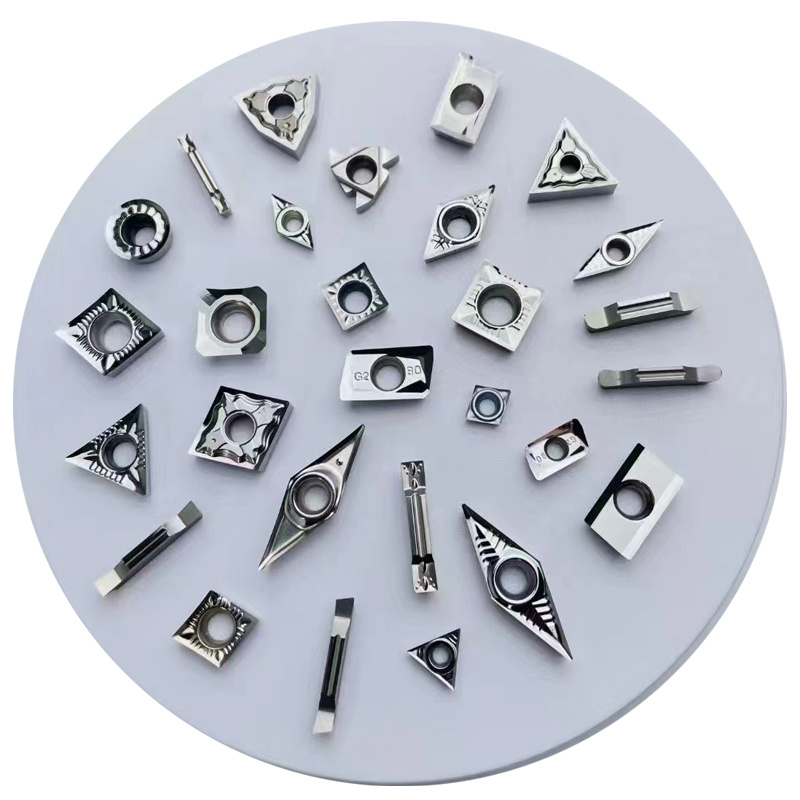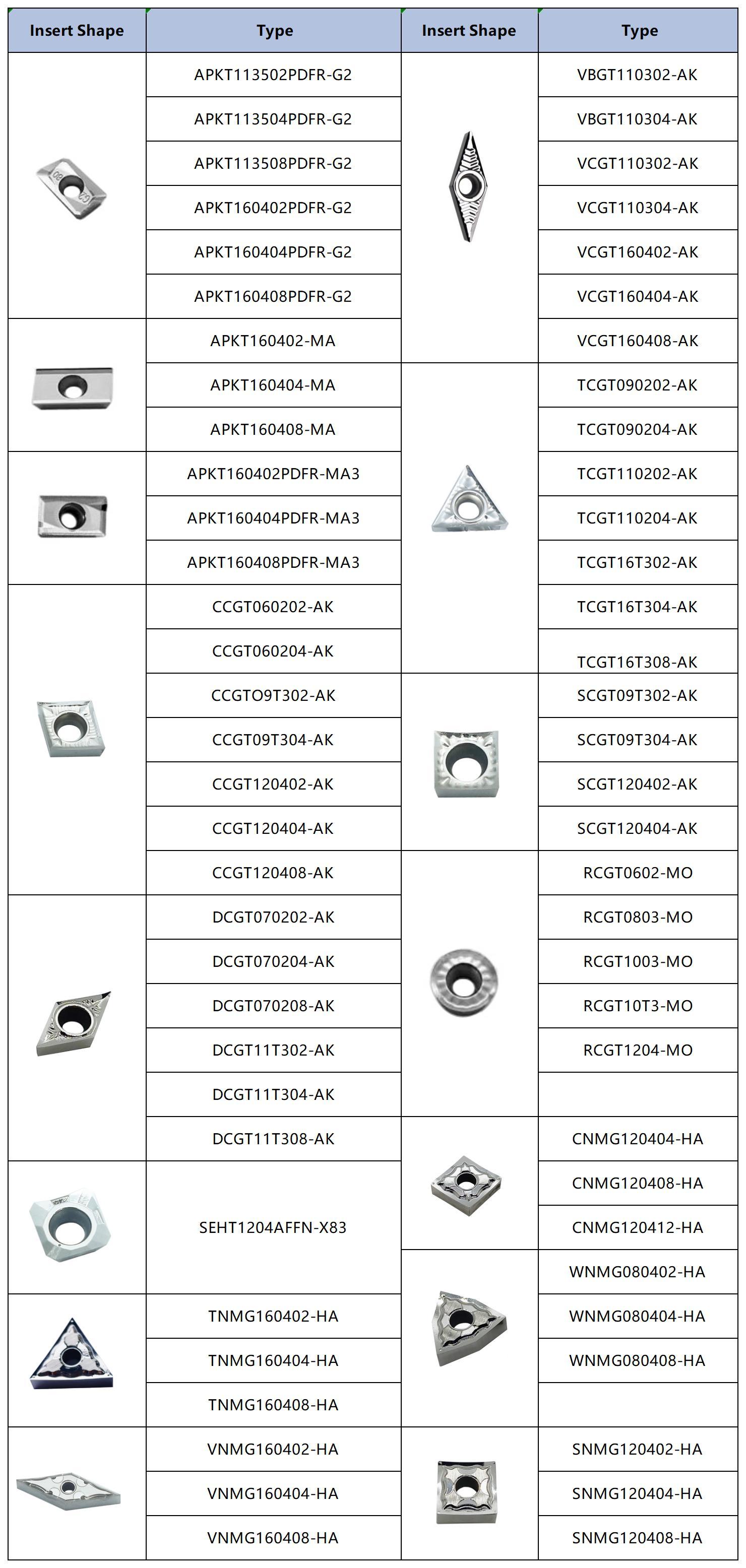




Carbide insert for aluminium processing
Series:uncoated carbide insert
work-piece: Aluminium, Wood, Copper
Keywords:
Insert for coal mining
Category:
Product Description
Uncoated carbide insert are widely used in the processing of aluminum parts. The hard and wear-resistant properties of these insert ensure a prolonged tool life and efficient machining. These insert offer cost-effectiveness, making them a preferred choice for many applications.
Modern machining procedures rely heavily on carbide inserts because they offer efficiency, precision, and cost-effectiveness. These inserts are even more essential when it comes to machining aluminum because of the special characteristics and difficulties linked to the material. With a focus on topics including insert types, selection criteria, best practices, and safety considerations, this comprehensive book attempts to shed light on the importance of carbide inserts in aluminum machining.
Carbide insert for aluminum are typically advised when bigger diameters, higher feed rates, and deeper cuts are used, or simply when changing inserts is preferable to regrinding a high-speed steel or brazed carbide tool for a variety of reasons. The usual insert substrate is tungsten carbide, which is more brittle than high-speed steel. Many ccgt 060204 inserts feature several cutting edges (for indexing), post-processing treatment (such as grinding, polishing, or coating), and may be available in varying radii depending on the application. Indexable tool holder shanks as tiny as 1/4″ may be found for lathes, while indexable milling diameters as small as 3/8″ can be obtained for milling machines.
Insert shape, rake angles, and relief angle are three primary geometries that have a significant impact on ccgt 09t304 insert performance. Because aluminum is a slippery and free-machining material, sharper angles are usually advised to aid shear through the material rather than pushing it with a honed or dull cutting edge.
- Shape of Insert
When making smaller quantities or prototypes, the primary deciding element of an insert may simply be the tool holder available for that application, and many holders will have specialized geometries for cutting aluminum. Round, triangular, square, parallelogram, and diamond-shaped inserts can all be employed advantageously. When selecting an insert form, it is usually advised that the most acute angle be chosen after taking into account the specified application, clearance, depth of cut, feed rate, and amount of interruption that the application will allow. The geometry of the insert can increase application efficiency, effectiveness, and tool life. For example, a sharp 35° diamond shape might assist a high-speed finishing application in single-point turning of aluminum, but you may wish to avoid a sharp 35° diamond shape on sand-casted aluminum with a rough surface and use a round-shaped insert.
- Relief Angles
The relief angle is the angle formed between the workpiece and the cutting tool, often on the insert’s side. Relief angles are classified into two types: positive and negative. Any angle larger than zero is called positive relief, whereas any angle equal to zero is considered negative relief. The location of an insert on the holder can change the total relief; for example, an insert with a 20° relief can be angled to raise its overall relief to 25°. The relief angle, in combination with the rake angle, influences the cutting process and its outcome.
- Rake Angles
The rake angle is the angle between the cnmg insert for aluminum tip and the workpiece. Rake angles are classified as negative, neutral, or positive. A positive rake angle is excellent, and most manufacturers will employ their greatest positive angles for cutting geometry. A good rake angle aids in chip disposal, reduces insert cutting resistance, lowers cutting temperature, reduces built-up edge (BUE), improves machinability, and lowers cutting power needed. Caution is required since a positive rake angle is prone to fracture and should not be used on ferrous or difficult-to-cut materials.
- Chipbreakers
Aluminum chips are sticky and can become overwhelming quickly. A chipbreaker with a high positive and sharp edge is suggested. Rake angles and sharp cutting edges are typically emphasized with aluminum / non-ferrous specialized chipbreakers and are too sharp for many other materials.
Advantage:
-Shape edge
-Non-stick knife
-Smooth chip removal
-Long service life...

Specification as bellow:

Related Products


